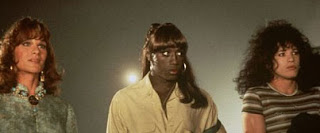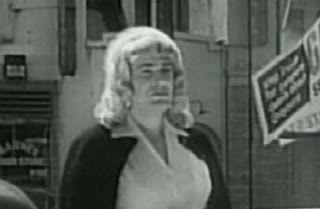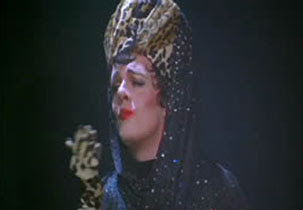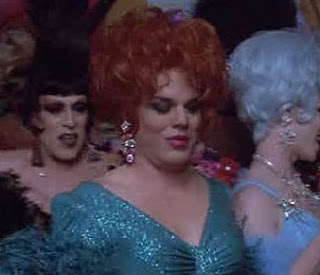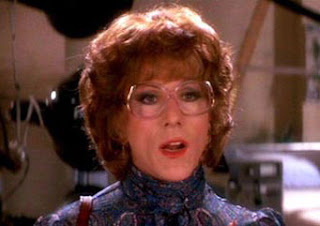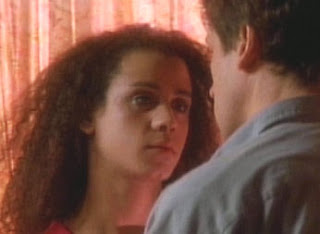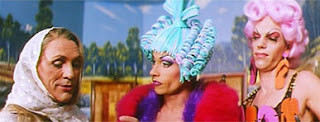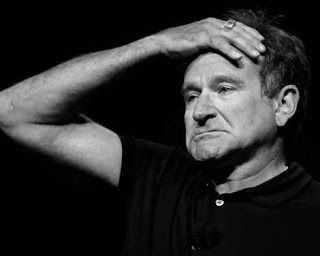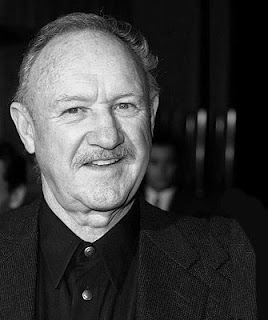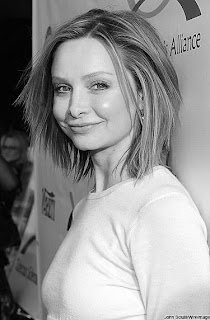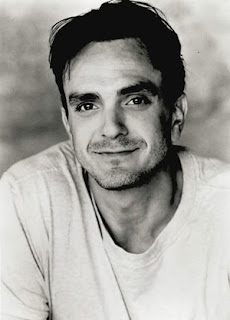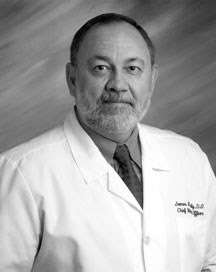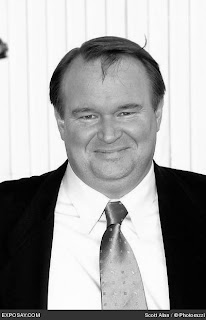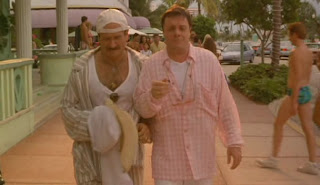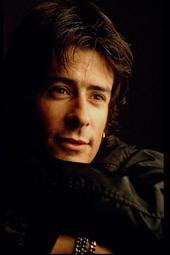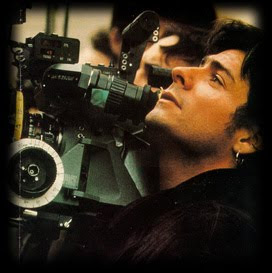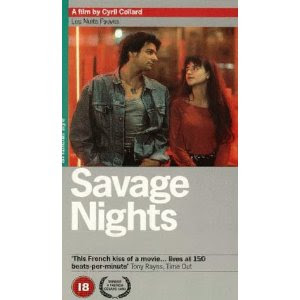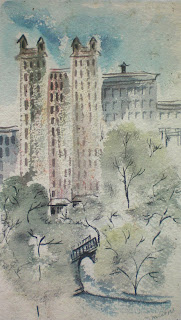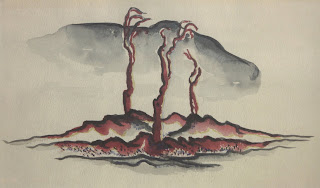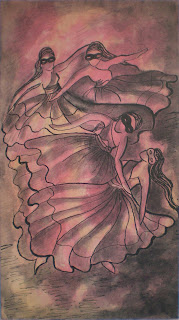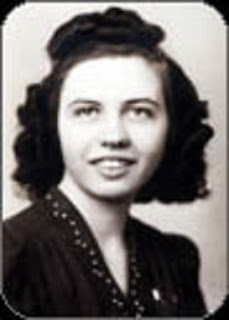Val Goldman (
Futterman) and Barbara Keeley (
Flockhart) are engaged to be married, and have decided to have their families meet. Val's father, Armand Goldman (
Williams), owns The Birdcage, a
South Beach drag club. His domestic partner is Albert (
Lane), who appears regularly as "Starina," the show's star
drag queen. Barbara's father, however, is ultraconservative
Republican Ohio Senator Kevin Keeley (
Hackman).
Fearing their reaction if they learn the truth about Val's parents, Barbara tells her parents that Armand is a cultural
attaché to
Greece, that Albert is both a woman and a housewife, and that they divide their time between Greece and Florida; she also changes the family's last name from Goldman to Coleman to hide their
Jewish background.
At this point, Kevin receives a phone call: Senator Jackson, Kevin's colleague and co-founder of the Coalition for Moral Order, has been found dead in the bed of an underage black
prostitute; the event receives a large amount of coverage in the media. Louise Keeley (
Wiest) then proposes a visit to meet their new in-laws as diversion to save Kevin's political career which will give them an excuse to get out of town, and Barbara's marriage into a "traditional, wholesome" all-American family will give the Senator excellent
PR material.
Barbara phones Val in South Beach about the lies she has told her parents. After much persuasion, Val eventually convinces Armand to go along with the farce. Armand has the house redecorated in a more austere manner, and begins remaking himself as an unassuming, conventional, heterosexual American male. He gets in touch with Val's biological mother Katherine Archer (
Baranski), and she agrees to join in the charade he's planning.
Despite the changes to the house and Katherine's help, Armand realizes that Albert's outlandish, effeminate mannerisms will be a giveaway as to the true nature of the Goldman household. Armand gently requests that Albert not be present for the dinner party that evening; Albert becomes offended and threatens to leave Armand entirely. A compromise is reached where Albert remains and acts as Val's uncle, but this soon falls apart when Albert cannot effectively pretend to be
straight. Another argument ensues and Albert locks himself in his bedroom.
Meanwhile, the Keeleys are traveling to South Beach. As the evening draws nearer, Agador (
Azaria), the Goldmans' flamboyant, gay housekeeper, has been made into a butler and chef for the evening, despite the fact that he cannot cook and never wears shoes.
The Keeleys arrive at Armand's residence, but Katherine, who is to play Val's mother, ("Mrs. Coleman") is stuck in traffic and has still not arrived. Everyone engages in awkward small talk but Armand is nervous, even more so because Katherine has not arrived. Meanwhile, Kevin and Louise are worried that Armand's nervousness is because he has heard about the Jackson scandal and is uncomfortable having the Keeleys in his house.
Suddenly, Albert emerges dressed in drag as a middle-aged mother. Armand and Val are horrified, fearing that Katherine's arrival would destroy the illusion. Meanwhile, Agador has prepared nothing for dinner but a bizarre soup containing, among other things, shrimp and hard-boiled eggs. Despite the many challenges facing them, Armand, Val, and Barbara all act the part and interact with Albert as "Mrs. Coleman."
Before dinner, Louise Keeley notices that the soup bowls depict men in homoerotic poses in a classical Greek style. Armand insists that she is mistaken and promptly fills everyone's bowl with the soup before Mrs. Keeley or the Senator can take a closer look. The primary topic of conversation is politics and, despite many potential pitfalls, Albert quickly wins over the Senator with a very right-wing tirade on the moral collapse of American society. But Louise Keeley is still suspicious: the dinner was terrible and Armand kept leaving the table for no apparent reason. Kevin defends Mrs. Coleman as a true lady and remarks that Armand is just a "pretentious European".
Val leaves a note for Katherine on the bar's front door, informing her not to come inside, but two paparazzi photographers, hoping for a scoop, remove the note once Val is gone. Katherine subsequently arrives and introduces herself as Mrs. Goldman. Kevin demands to know why there are two Mrs. Colemans; Val realizes that he cannot keep lying and pulls off Albert's wig, explaining to the Keeleys that while Katherine is his biological mother, Albert is his primary mother figure.
As feared, Kevin and Louise are taken aback upon learning that Albert and Armand are gay Jewish nightclub owners. Louise breaks down, and Kevin announces that they are leaving and demands that Barbara come with them but she is reluctant to do so. However, the Keeleys realize they have been followed by paparazzi and are trapped as news crews begin arriving at the scene, all thanks to tip-offs by the Keeleys' driver in exchange for bribes.
The Goldmans, Keeleys, Katherine, and Agador sequester themselves in a bedroom and contemplate the best plan of action. Val and Barbara explain why they deceived Kevin and Louise. They are forgiven, but the Keeleys fear being tangled up in a media scandal if spotted in a gay nightclub. In a moment of brilliance, Albert then choreographs the Keeleys' escape by dressing them up as drag queens and having them leave the club as the night's show ends. The plan works perfectly and none of the media crews recognize Kevin, Louise, or Barbara. Kevin, a supposed homophobe, is distressed not by wearing a dress but by the fact that the costume "makes him look fat." The group leaves South Beach with Katherine, passing Kevin's driver on the way out, who does not recognize him, even when they speak.
The film ends with Barbara and Val getting married in an
interfaith ceremony attended by all of their families and friends.
Robin Williams as Armand Goldman
Nathan Lane as Albert Goldman
Gene Hackman as Sen. Kevin Keeley
Dianne Wiest as Louise Keeley
Dan Futterman as Val Goldman
Calista Flockhart as Barbara Keeley
Hank Azaria as Agador
Christine Baranski as Katherine Archer
A number of songs written by
Stephen Sondheim were used in the movie. The song that Albert rehearses during the sequence with the gum-chewing dancer is entitled Little Dream, and was written specifically for use in the film.
[1] Albert's first song as "Starina" is "Can That Boy Foxtrot," cut from Sondheim's
Follies. The song that Armand and Katherine sing and dance to in her office, "Love Is in the Air," was originally intended as the opening number for the Broadway musical
A Funny Thing Happened on the Way to the Forum in 1962. The song was cut from the show and replaced with Comedy Tonight.
[2]The Birdcage met with mixed reviews ranging from praise to condemnation in both the mainstream press and the gay press for the portrayals of its gay characters.
The
Gay & Lesbian Alliance Against Defamation (GLAAD) praised the film for "going beyond the stereotypes to see the character's depth and humanity. The film celebrates differences and points out the outrageousness of hiding those differences."
[3]Review aggregator Metacritic reported that the film received "generally favorable" reviews, with a score of 72% based on 18 reviews.
[4]Cross-dressing in film and televisionList of lesbian, gay, bisexual, or transgender-related films by storyline[
edit] References
^ Sondheim.com - Putting it together since 1994,
http://www.sondheim.com/shows/the_birdcage/^ Sondheim.com - Putting it together since 1994,
http://www.sondheim.com/shows/a_funny_thing_happened/#cut_songs^ GLAAD's press release on The Birdcage, retrieved January 20, 2007 from www.glaad.org
^ http://www.metacritic.com/video/titles/birdcage[
edit] External links
The Birdcage at the
Internet Movie DatabaseThe Birdcage at
Box Office Mojo 